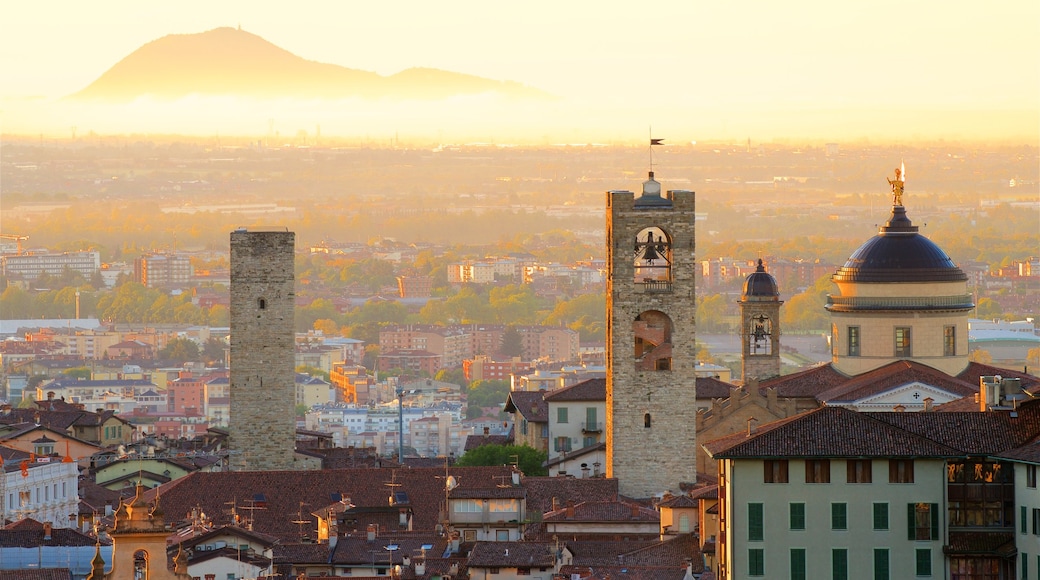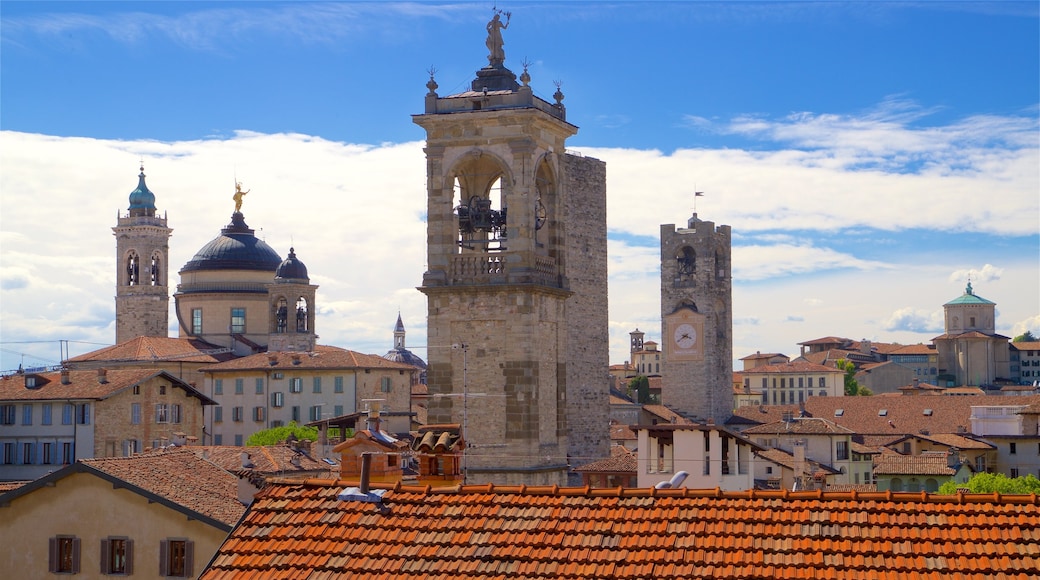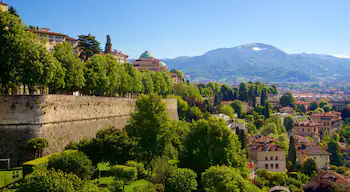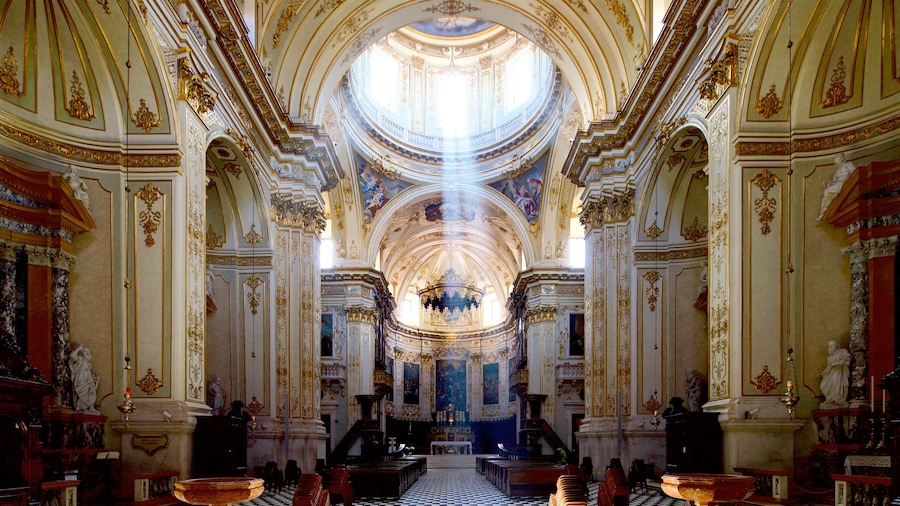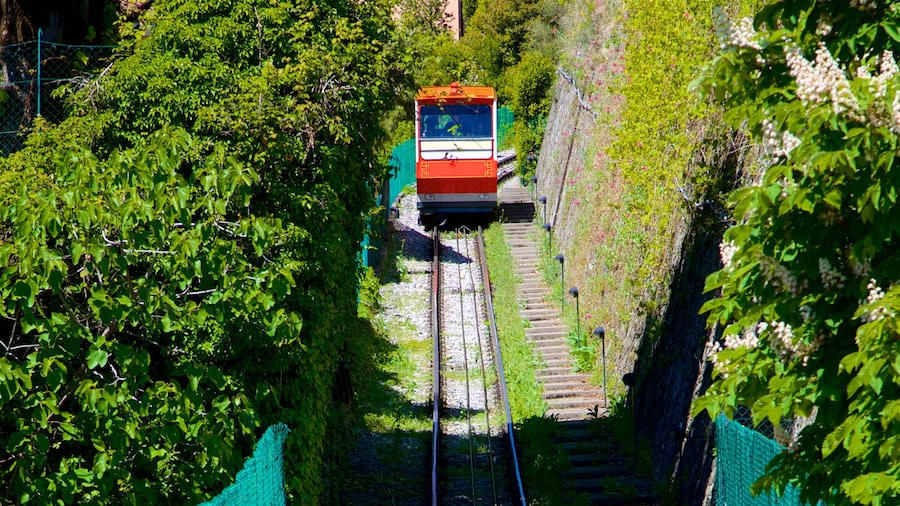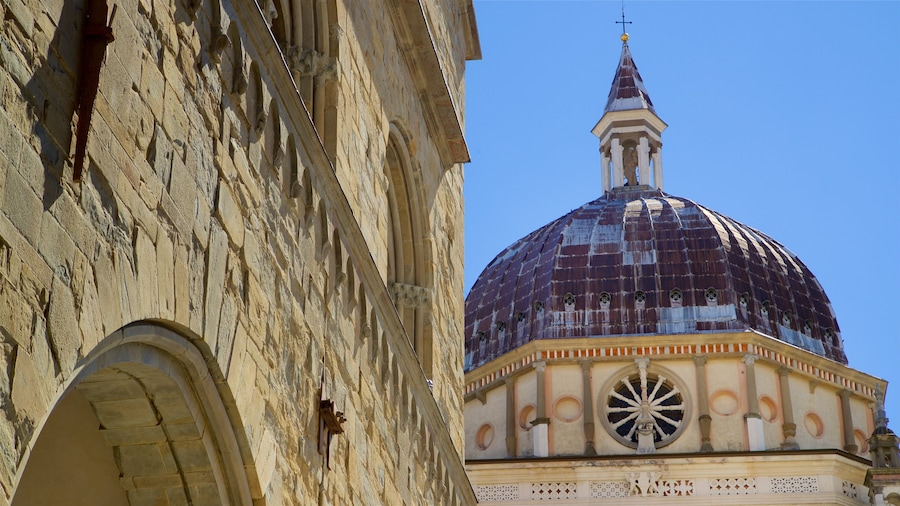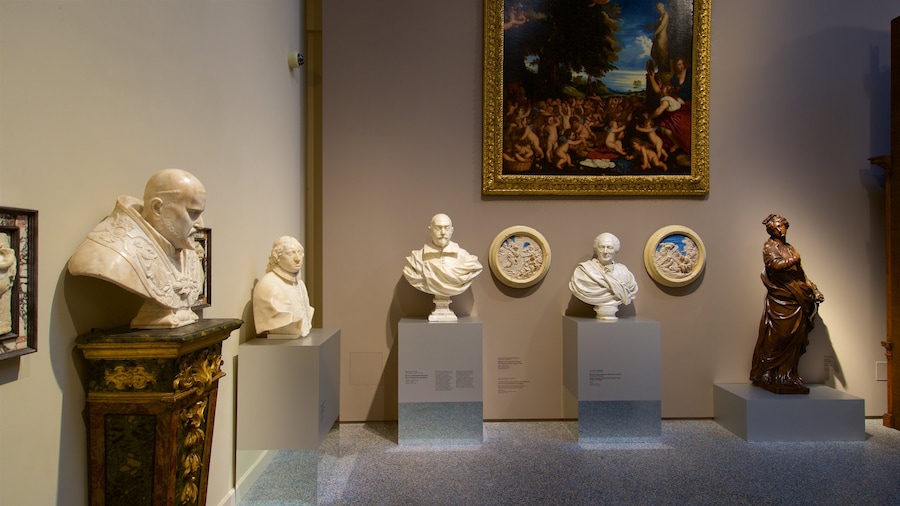As mentioned before, Bergamo unfurls on two levels: Bergamo Alta, on the hilltop, enclosed by mighty stone walls, and Bergamo Bassa, spread across the surrounding flatlands. The best way to see everything is to begin at the bottom, gradually ascending towards the ancient noble heart of the city. In the northern part of Bergamo Bassa stands the Accademia Carrara, a Neoclassic building commissioned by Giacomo Carrara that houses one of the most important art galleries in Italy. Leaving the Accademia, you head onto Via San Tomaso, which at one time was the main road leading to Val Seriana and Val Brembana. You can admire sixteenth and seventeenth century buildings along Via Pignolo and glimpse their quiet elegant courtyards. Continuing straight on, you'll find the Church of Sant'Alessandro della Croce, the Church of San Bernardino and the fourteenth century Church of Santo Spirito. If you happen to get hungry, definitely take the opportunity to stop in at the renowned Ristorante Vittorio, whose food merits its fame. In the summer, you can enjoy lunch in the open air.
After a delicious feast, the itinerary continues onto Piazza Matteotti. To its southern side (Largo Porta Nuova), the Sentierone boulevard runs through the opening in the city walls. Created in the seventeenth century to open up communication between between the eastern and western parts of the city, it was renovated in the 1920s, becoming the best place in Bergamo for a stroll. The Sentierone culminates with the Baroque façade of the Church of San Bartolomeo, which houses the Madonna with Child and Saints by Lorenzo Lotto. On the nearby Via Sant'Alessandro, the Church of Sant'Alessandro in Colonna houses masterpieces by Lotto, del Bassano and del Romanino. Further along, you have the chance to visit Artificio, an unusual novelty shop full of unique pieces created from recovered and recycled materials. From there you can make your initial approach into the ancient heart of Bergamo, taking a precursory stroll through Piazza Duomo and Piazza Vecchia. It's worthwhile stopping off at the historic Bar del Tasso on Piazza Vecchia, a special place considering the fact that it's been around for five hundred years.
So prepare to get to know the heart of Bergamo, which pulses in its most celebrated squares. Piazza Vecchia and the even older Piazza Duomo are just a stone's throw away, heading down Via Donizetti, which boasts an authentic example of a Renaissance home: the Casa dell'Arciprete, with its decorative marble façade. In the distance, you can glimpse the Piazza del Duomo, with its elegance and surprising asymmetry embracing the Duomo, symbol of religious power and witness to intrigue and disputes. To the side, stands the Colleoni Chapel, commissioned between 1472 and 1476 by the Bergamasco leader Bartolomeo Colleoni to be a mausoleum for himself and his daughter, Medea. In the square you can see the left side of the Basilica of Santa Maria Maggiore, which has conserved its primitive Romanesque form on the outside. On Piazza del Duomo, in the garden of the Vescovado, stands the octagonal Baptistery, built by Giovanni da Campione in the mid-fourteenth century.
Next to the Piazza del Duomo is Piazza Vecchia, age-old headquarters and symbol of civic power. There's a fountain at its centre, donated by the Venetian mayor, Contarini. The oldest building on Piazza Vecchia is the Palazzo della Ragione (dating back to the 12th century) with a central balcony and a window topped by the Lion of St. Mark, the work of Pietro Isabello, a master Renaissance architect from Bergamo. To the right of the Palazzo della Ragione is the Torre del Comune, which has been modified multiple times, especially at the top. Here, too, you'll find the sixteenth century Palazzo Nuovo, today home to an important library and the Palazzo del Podestà Veneto, which houses the University of Bergamo.
